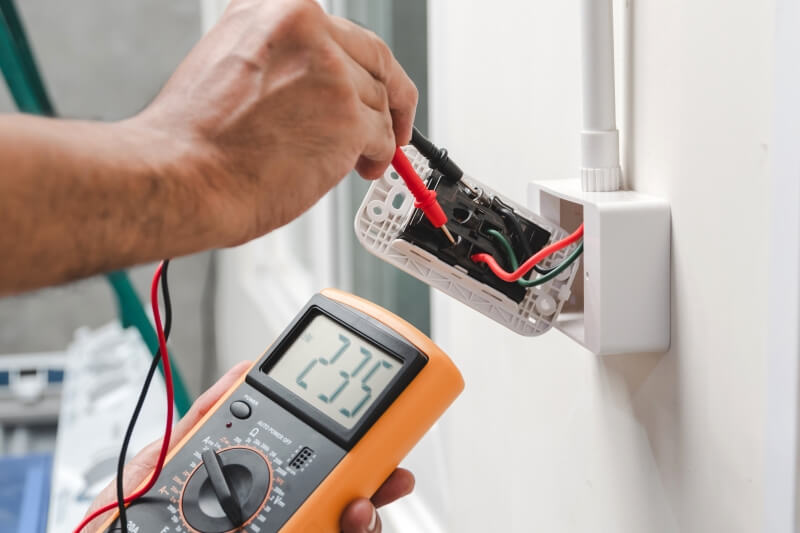
In today's digitally connected world, wall sockets are more than just a convenience; they are a necessity. From charging smartphones and laptops to powering essential home appliances, these unassuming fixtures play a critical role in our daily lives. So, when a wall socket suddenly stops working, it's not just a minor hiccup—it's a disruption that can throw off your entire day. Whether you're in the middle of a crucial work presentation, cooking dinner, or simply trying to keep your devices charged, a non-functioning wall socket can be a significant inconvenience. In this article, we'll explore the common reasons why wall sockets stop working and offer practical solutions to get them up and running again.
What causes a wall socket to stop functioning?
When a wall socket ceases to function, it's easy to jump to conclusions and assume the worst. However, the issue may be due to a variety of factors, some of which are relatively easy to fix. Understanding the common causes can help you troubleshoot the problem effectively and take appropriate action. Here are some of the usual suspects:
Failed Internal Socket Connections
Over time, the internal connections within a wall socket can wear out, especially in older outlets. This wear and tear can result in a loose grip on plugs, causing intermittent or complete loss of power.
Tripped Circuit Breaker
One of the most common reasons for a wall socket to stop working is a tripped circuit breaker. When the circuit breaker detects an overload or short circuit, it automatically cuts off the electrical supply to prevent damage or fire. This action will disable all outlets and devices connected to that particular circuit.
Loose Connections Within the Circuit Breaker Box
Sometimes, the issue may not be with the socket itself but with the connections within the circuit breaker box. Loose or corroded connections can interrupt the flow of electricity, causing the socket to malfunction.
Faulty Wiring
Wiring issues can also be a culprit. If the wires connecting the electrical outlet to its circuit are damaged or frayed, it can result in an unstable connection, causing the socket to stop working.
Tripped GFCI Outlet
Ground Fault Circuit Interrupter (GFCI) outlets are designed to protect against electrical shocks by cutting off power when they detect an imbalance in the electrical current. Sometimes, a GFCI outlet may trip, causing the connected wall socket to stop working.
Defective or Burned-Out Outlet
In some cases, the outlet itself may be defective or burned out due to overloading or age. When this happens, the only solution is to replace the outlet.
Is the Device or the Socket the Problem?
While it's easy to point fingers at the wall socket when your device doesn't power up, sometimes the issue may lie within the device itself. Before you start disassembling the wall socket or head to the circuit breaker, it's worth taking a moment to consider the following device-related issues:
Short Within the Device
Electrical devices are not immune to wear and tear, and internal components can sometimes fail. A short circuit within the device can prevent it from powering up, leading you to mistakenly believe that the wall socket is at fault. To rule this out, try plugging the device into a different, working socket. If it still doesn't power up, the issue is likely with the device itself.
Damaged Wiring in the Device's Cord
Another common issue that can mimic a faulty wall socket is damaged wiring in the device's power cord. Over time, the cord can become frayed or damaged, disrupting the flow of electricity. This can happen due to frequent bending, pulling, or even due to the age of the cord. A visual inspection can often reveal such damage, but sometimes the wear may be internal and not immediately visible.
Before you embark on a troubleshooting journey with your wall socket, it's a good idea to first confirm that your device and its cord are in working condition. This simple step can save you both time and unnecessary effort, helping you focus on the real issue at hand.
Half-Hot Outlets
What is a Half-Hot Outlet?
A half-hot outlet is a specialized electrical outlet where one of the two sockets is constantly powered, while the other is controlled by a wall switch. This allows for greater flexibility in controlling electrical devices; for example, you could have a lamp plugged into the switched socket and a phone charger in the always-on socket.
Confusion for Homeowners
For those unfamiliar with half-hot outlets, they can be a source of confusion and frustration. Imagine plugging your phone charger into one socket and a lamp into the other, only to find that the lamp doesn't turn on. You might immediately assume that the outlet is faulty. In reality, the lamp may be plugged into the socket controlled by the wall switch. Understanding which socket is switched and which is always "hot" can save you from unnecessary troubleshooting or even a needless call to an electrician.
Troubleshooting for Electrical Issues
When you encounter a non-working wall socket, it's easy to jump to conclusions and worry about the worst-case scenario. However, there are several straightforward troubleshooting steps you can take to identify and possibly resolve the issue yourself.
Resetting a GFCI Outlet
If your non-working outlet is a Ground Fault Circuit Interrupter (GFCI), look for a "reset" button in the middle of the outlet. Pressing this button can often restore functionality. GFCI outlets are commonly found in areas like bathrooms and kitchens and are designed to protect against electrical shocks.
Checking for Tripped Breakers
Another common reason for an outlet to stop working is a tripped circuit breaker. To check this, go to your home's electrical panel and look for any breakers that have flipped to the "off" position. Resetting the breaker to the "on" position can often restore power to the outlet. If the breaker trips again soon after, it's a sign of a more serious issue that likely requires professional attention.
Troubleshooting Dead Outlets
When you've ruled out common issues like tripped breakers and GFCI outlets, and you're still facing a non-working wall socket, it may be time to look at the outlet itself. Here's how to go about it:
Checking for Loose Connections
Safety First: Before you start, turn off the power to the outlet at the electrical panel to prevent electrical shocks.
Remove the Faceplate: Use a screwdriver to remove the outlet's faceplate.
Inspect the Outlet: Gently pull the outlet from the box in the wall and look for any loose or disconnected wires.
Tighten Connections: If you find any loose screws or wires, tighten them and ensure they are properly connected.
Inspecting for Damaged Wiring
Visual Inspection: Check the wires for any signs of damage, such as fraying, burns, or corrosion.
Replace Damaged Wires: If you find damaged wires, they will need to be replaced. This is a task best left to professionals unless you are experienced in electrical work.
When to Call a Professional
Signs You Need Professional Help
Persistent Issues: If you've tried all the troubleshooting steps and the outlet is still not working, it's time to call a professional.
Multiple Non-Working Outlets: If more than one outlet is not working, this could indicate a more serious electrical issue.
Damaged Wiring: If you find damaged or burned wiring during your inspection, it's best to consult a professional for repair or replacement.
Circuit Breaker Issues: If the circuit breaker keeps tripping even after you've reset it, this could indicate a more serious problem that requires professional attention.
Conclusion
Dealing with a non-working wall socket can be a frustrating experience, especially when it disrupts your daily activities. However, understanding the common causes—from tripped circuit breakers and GFCI outlets to more complex issues like faulty wiring—can empower you to take effective action. We've also discussed the often-overlooked half-hot outlets and how they can be a source of confusion for homeowners.









